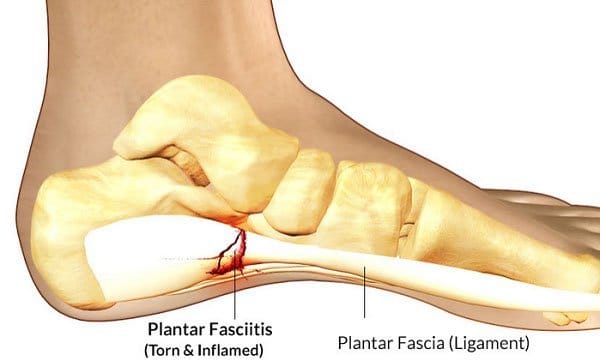Statistically, you will walk about 100,000 miles during your life. You will need healthy feet for mobility. Unfortunately, if you’re like most people, you seldom pay as much attention to your feet as you do to other parts of our body. In fact, you may seldom consider keeping your feet healthy as a vital part of your daily routine. After all, it’s easier to tuck them into slippers and socks shoes and simply forget about them.
But you will start to pay attention to your feet should you experience any pain. Here are 5 common conditions that can affect your feet and what you can do about them:
1. Pronation
Pronation of the foot is a more scientific description of what is more commonly referred to as “flat feet” or “fallen arches.” Since the foot is now flatter, it works less effectively as a shock-absorbent. It also provides a less stable base to balance your whole body. Although a pronated foot may not look like anything to be alarmed about, it can seriously impact your entire body, affecting the tendons, bones, ligaments, and muscles of the thighs and hips.
Treatment: Here is one excellent exercise. Use your gluteal muscles to raise the arches of your feet, then continue to keep your arches raised and push down your big toe. As you push down, you should feel the tension build up in the underside arch of your foot. Hold this position for at least 15 seconds. Repeat a few times to help ease the tension.
2. Plantar fasciitis

Plantar fasciitis is a foot condition that you feel either in the arch of your foot or at the bottom of your heel. It may feel like a bruise or a dull ache. The pain may begin to go away when you walk around a little; but, unfortunately, it will soon return. This foot condition is caused by inflammation of the band of tissue connecting your heel to your toes. This is a common condition, suffered by millions of people.
Treatment: A variety of treatments are possible, ranging from a simple tennis ball and Protalus shoe inserts to physical therapy. If the pain is particularly acute, you may have to get steroid injections. If nothing helps, then surgery is your last option.
3. Hammertoes
A hammertoe is usually a result of consistently wearing high heels with narrow toe boxes. The toe next to the big toe is impacted by the pressure of walking at an awkward angle. In addition, the affected toe may also develop corns.
Treatment: The best treatment is to change your shoes, preferring flatter shoes. Find one with a wider toe box and less of a raise. Pumice stones help with the corns.
4. Heel spurs
If you have a heel spur, it’s due to a calcium deposit that causes a bony protrusion on the underside of your heel bone. This condition is often associated with another foot problem, plantar fasciitis.
Treatment: Treat your heel spur with a hot bath with Epsom salt, which is magnesium sulfate. The Epsom salt reduces the inflammation which will relieve the pain.
5. Athlete’s foot
One common foot problem is athlete’s foot because athletes often share a common locker room and walk around barefooted. Fungal infections spread in a contagious way because skin particles remain in shoes, floors, or on towels. Usually, you can contact athletes foot by walking around barefoot in a gym’s bathroom or the bathroom of a swimming pool. It’s also possible to contact it in your own bathroom if a family member has it.
Treatment: Keep your feet free of fungus. You can do this by keeping your toenails clipped short, never walking barefoot in public bathrooms, and washing your feet daily and drying them thoroughly. If your bathroom or shower is contaminated, disinfect the floors regularly.
In conclusion, when it comes to the health of your feet, prevention is better than a cure. Besides causing pain, foot problems will also cause you psychological distress because painful feet will reduce your mobility. So, take care of your feet on a regular basis. If you should have any foot problems, get medical care. If caught at an early stage, many foot problems can be resolved with simple solutions like massage, chiropractic care, simple exercises, new shoes, or medicated creams and ointments.

